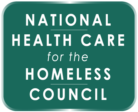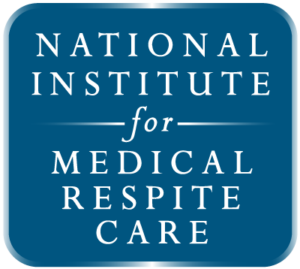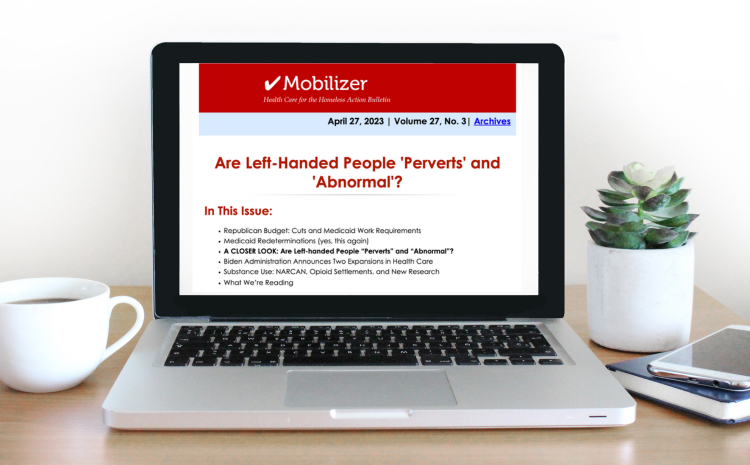President Biden released his FY2025 budget on March 11, setting the top-line spending and policy
priorities the Administration would like to see Congress pursue as they navigate their own budgeting processes. Our new fact sheet outlines the provisions contained in the President’s FY25 budget that are of primary interest to the Health Care for the Homeless Community. Read on for a breakdown of the highlights, or click the button below to download a PDF version of the fact sheet.
Department of Health and Human Services(HHS)
The HHS FY2025 Budget in Brief contains more details specific to HHS programs.
Health Resources and Services Administration (HRSA)/Health Centers:
- The FY 2025 budget provides $16.3 billion for HRSA, $2 billion above FY 2023. FY 2025 budget requests $8.2 billion for Health Centers, which includes $6.3 billion in proposed mandatory funding, an increase of $2.4 billion above FY 2023 enacted levels and $1.9 billion in discretionary resources. The Budget provides resources for Health Centers to serve approximately 37.4 million patients in FY 2025, an additional 3.9 million patients.
- $50 million request to invest in a new initiative for 150 health center awards to expand access to street medicine services, increasing street outreach and patient support services. These resources would be targeted to Health Care for the Homeless grantees and expand their capacity to provide outreach to homeless populations and enhance their ability to bring high quality care outside of traditional settings via street medicine.
- The Budget requires statutory mental health and substance use disorder services under Section 330 of the Public Health Service Act, which includes expanded hours ($250 million), new access points ($150 million), and behavioral health expansion ($700 million).
- The Budget proposes an additional $2.4 billion as “the second annual installment of the President’s plan to create a pathway to double the program’s funding.” These funds are to be used to expand services – particularly maternal health services, enabling services, and services for people experiencing homelessness.
- Provides $2.6 billion for HRSA workforce programs, which includes $1.1 billion in proposed mandatory resources, to expand workforce capacity across the country and includes $915.7 million (an increase of $498 million above FY 2023) for the National Health Service Corps (NHSC).
Centers for Medicare and Medicaid Services (CMS)/Medicaid:
- Medicaid coverage gap: Provides Medicaid-like coverage to low-income individuals living in states that have not expanded Medicaid under the Affordable Care Act, paired with financial incentives to ensure states maintain their existing expansions. [$200 billion in government-wide costs over 10 years]
- Maternal health: Requires states to provide 12 months of postpartum coverage in Medicaid and CHIP. [$440 million in costs to Medicaid costs over 10 years; $707 million in net savings over 10 years.]
- HIV prevention: Requires states to cover Pre-Exposure Prophylaxis (PrEP) and associated laboratory services with no cost sharing for Medicaid and CHIP beneficiaries. [$10.6 billion in savings over 10 years]
- The budget invests $157 million to provide prevention and treatment services to people at high-risk for HIV transmission, including Pre-Exposure Prophylaxis related services, outreach, and care coordination.
Substance Abuse and Mental Health Services Administration (SAMHSA):
- SAMHSA’s proposed FY2025 budget is $8.1billion, $612 million more than FY 2023 Final. The FY 2025 budget provides $3.5 billion for SAMHSA’s mental health activities. The proposed investments will address suicide prevention, increase crisis response, and provide direct services to people experiencing homelessness. The increase in the budget will be used to expand behavioral health care services, community harm reduction initiatives, address suicide prevention, and substance use disorder treatment.
- Mobile crisis response: $40 million for mobile crisis response, $20 million over FY 2023 enacted. At this level 48 grants willsupport communitiesto increase crisisresponse capacity and integrate community 9-8-8 crisis systems.
- Projects for Assistance in Transition from Homelessness program: The FY 2025 budget maintains funding for the Projects for Assistance in Transition from Homelessness program at $67 million to maintain services at the level provided in FY 2023. This funding will continue to serve individuals experiencing homelessness who also experience serious mental illness.
- Community Mental Health Block Grant: $1 billion, an increase of $35 million above FY 2023 enacted. This block grant provides flexible funding and supports stable and effective services for our nation’s most vulnerable populations. It would require states to set aside 5 percent of their allocation for evidence-based care programs to address the needs of individuals with early serious mental illness.
- Substance Use Prevention and Treatment: $122 million for Targeted Capacity Expansion grants to support prevention, harm reduction and recovery services for states, tribes and territories to serve $13,500 people.
- Harm reduction: The FY 2025 budget builds on the American Rescue Plan Act of 2021’sinitial investment by proposing $10 million to establish the first annual appropriation for harm reduction services. Reaching approximately 330,000 individuals, the program would support distribution of naloxone, prevent overdose deaths, increase testing for HIV and viral hepatitis, and provide peer support services.
- First Responder Training program: Proposes to maintain funding for the First Responder Training program at $56 million and Grantsto Prevent Overdose Deaths at $16 million.
- Substance Use Prevention, Treatment, and Recovery Services Block Grant: $2 billion to ensure that families, and communities have access to the range of substance use-related prevention, treatment, public health, and recovery support services.
- State Opioid Response grant program: $1.6 billion, a $20 million increase above FY 2023 enacted, to provide direct services to prevent, treat, and promote recovery from issues related to opioid misuse and stimulant misuse.
Department of Housing and Urban Development (HUD)
The HUD FY2025 Budget in Brief contains more details specific to HUD programs. The White House also released a fact sheet on housing investments. The president’s budget requests $72.6 billion for the Department of Housing and Urban Development (HUD) and $185 billion over ten years for new mandatory affordable housing investments- including $81.3 billion for HUD programs to increase housing supply, lower homeownership costs, prevent homelessness and support low-income renters.
Rental Assistance
- $32.8 billion for Tenant-Based Rental Assistance (TBRA), which includes $241 million in discretionary funding for new vouchers under the Housing Choice Vouchers (HCV program) to provide help 20,000 more low-income individuals and families find and afford affordable housing.
- $22.3 billion for Housing Vouchers for Vulnerable Low-Income populations, includes $13.1 billion for extremely low-income veterans, and $9.2 billion to provide guaranteed housing voucher assistance or youth aging out of foster care.
- $16.7 billion in Project-Based Rental Assistance to renew rental assistance for current households.
Homelessness
- Discretionary funding for Homeless Assistance Grants: $4.1 billion (increase of $9 million) to provide housing and services to individuals and families experiencing homelessness and expand assistance for survivors of domestic violence, dating violence, sexual assault, and stalking, as well as youth experiencing homelessness.
- Mandatory funding for additional Homeless Grants: $8 billion in to expand temporary and permanent housing for people experiencing homelessness.
- Housing Opportunities for Persons with AIDS (HOPWA): $505 million, or $6 million above the 2023 level.
Public Housing
- Public Housing Fund: $8.5 billion for both capital and operating funds
- $417 million in discretionary funds to remove dangerous health hazards from homes for vulnerable families through funding for Lead Hazard Control and Healthy Homes programs and the Public Housing Fund, including mitigating threats from fire, lead, carbon monoxide, and radon.
Eviction Prevention
- $3 billion in mandatory funding to reform eviction policies through access to eviction prevention and housing instability resources.
- Emergency Rental Assistance for Older Adults at Risk of Homelessness: $3 billion in mandatory funding to prevent very low-income older adults in unstable housing from falling into homelessness and support those currently experiencing homelessness.
Increasing Housing Supply
- HOME Investment Partnership Program: $1.25 billion (level with FY24) to create or preserve 12,000 affordable housing units. Includes $50 million for first-generation, first time homebuyers
- $931.4 million for affordable housing for older adults and $256.7 million for housing for people with disabilities
- Project-Based Rental Assistance (PBRA): $16.7 billion to support assistance contract renewals that will retain affordable housing for affordable housing properties at risk for converting to market rates
- $37 billion in expanding this tax credit in order to boost the supply of housing that is affordable for low-income renters



